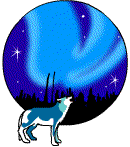Star constellations: Hercules
Created | Updated Aug 16, 2005
$Revision: 1.2 $.
This entry is part of the h2g2as constellations
project.
There exists an external star chart created for this entry.

| Latin: | hercules |
| genitive: | herculis |
| short form: | Her |
| area: | 1,225 square degrees |
| coordinates: | 17h, 30° |
| zodiac: | no |
| origin: | ancient |
Looking between Vega and Arcturus in the sky
during a late spring or summer night, one may spot what appears to be a rather
faint, slightly distorted square in the sky. This is the constellation
Hercules.
It is named after a great superhero in Greek mythology. Like all good
superheroes he routinely handled impossible tasks. He was born the son of Zeus
and an earthly queen called Alkmene. This liason enraged Hera, the wife of
Zeus, so she set about to destroy the boy. Hercules survived, and later in
life he accomplished twelve seemingly impossible tasks. At the end of his
earthly life he became an immortal god and his image was placed in the sky.
Because the star Ras Algethi means 'head of the kneeling one' and lies in
the southern part, the constellation is often visualised as a man
kneeling head first in the sky. The interpretation as Hercules is
2500 years old. But it is known that already 5000 years ago in
Babylon this constellation was seen as a kneeling man! In that mythology it
was of course not Hercules but Gilgamesh, the main character in
Babylonian Genesis. Gilgamesh stood on the head of the dragon in the
north.
There is no bright star in Hercules. The brightest one, Ras Algethi,
is a red giant with one of the biggest radii known, 400 times the sun. Ras
Algethi lies a little bit apart from the rest in the south, therefore it
belongs to Ophiuchus on many illustrations. It's a variable star, so it
changes its position as the brightest constantly with Kornephoros.
Sarin is a bogus double star. You see two stars in a good telescope,
however both stand in a very similar direction by a mere coincidence and they
do not belong together. This is called an optical double star, in
contrast to the physical one.
The central distorted square is comprized of the stars π, η, ζ,
and ε Her. These are called the keystone. By a very strange
coincidence the magnitude of π Her is 3.14.
When the Messier tables were compiled two very nice globular clusters were
noted in Hercules. One of them, M13, is the most famous globular cluster at
all. Globular clusters belong to the oldest parts of our galaxy, they are
almost as old as the Milky Way itself. They can contain millions of stars, and
the stellar density is 1000 times larger than in the vicinity of the
Sun!
Stars, Clusters, and Nebulae
| Star | Name | Brightness (m) | Distance (lightyears) | Remarks |
|---|---|---|---|---|
| α Her | Ras Algethi, Rasalgethi (head of the kneeling one) | 2.6–3.4 | 380 | triple star, v |
| β Her | Ruticulus, Kornephoros (club-bearer) | 2.8 | 162 | |
| ζ Her | 3.0 | 35 | d | |
| η Her | 3.5 | 112 | ||
| π Her | 3.1 | 367 | ||
| ε Her | 3.9 | 163 | ||
| κ Her | Marfak (elbow) | 5.0 | 388 | d |
| δ Her | Sarin | 3.1 | 79 | |
| ω Her | Cujam (club) | 4.6 | 235 | |
| λ Her | Maasym (wrist) | 4.4 | 367 |
| Catalogue No | Type | Brightness (m) | Distance (lightyears) | Remarks |
|---|---|---|---|---|
| M13 | globular cluster | 5.8 | 15,000–35,000 | |
| M92 | globular cluster | 6.4 | 25,000–27,000 |
